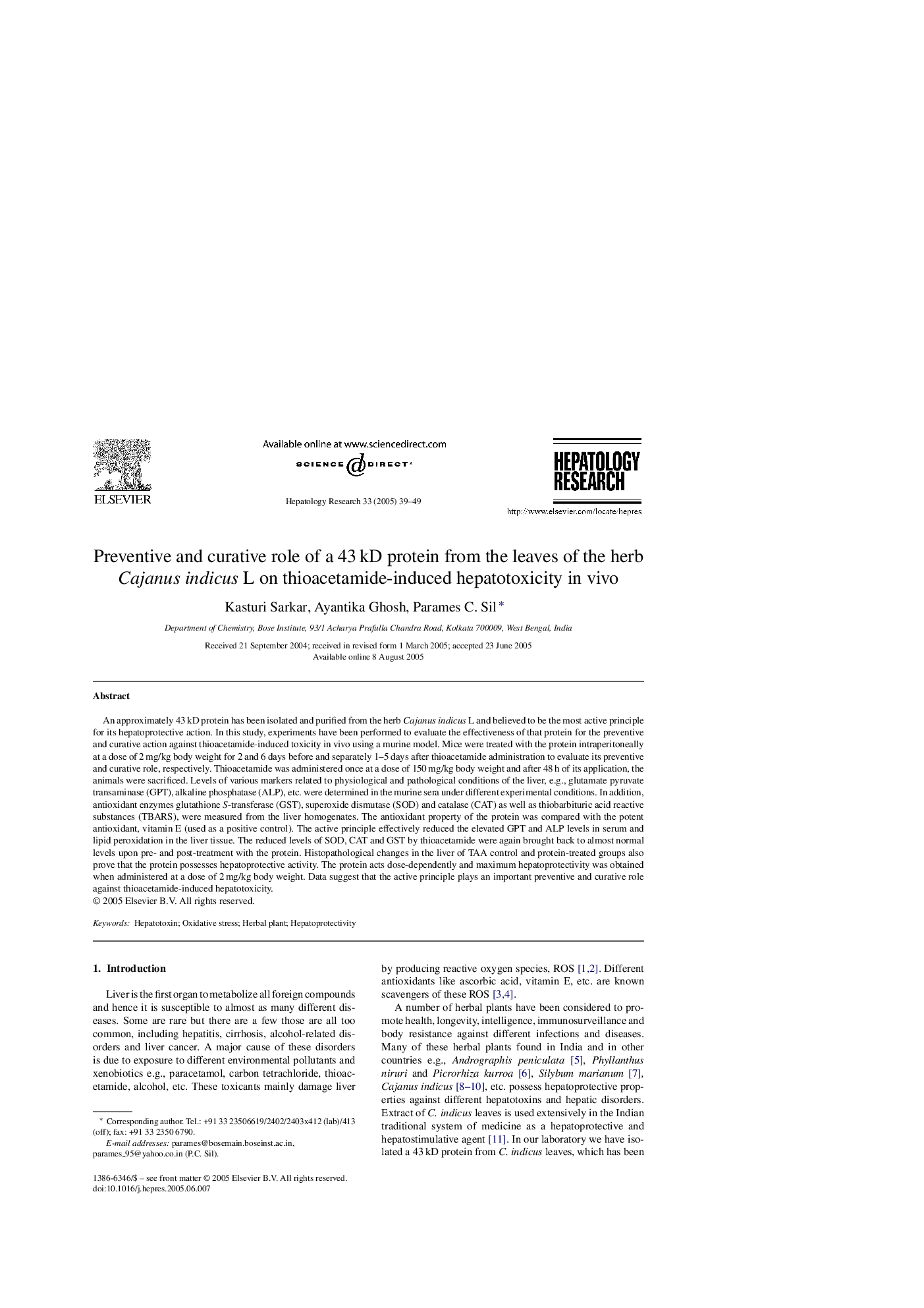| کد مقاله | کد نشریه | سال انتشار | مقاله انگلیسی | نسخه تمام متن |
|---|---|---|---|---|
| 9252804 | 1210873 | 2005 | 11 صفحه PDF | دانلود رایگان |
عنوان انگلیسی مقاله ISI
Preventive and curative role of a 43Â kD protein from the leaves of the herb Cajanus indicus L on thioacetamide-induced hepatotoxicity in vivo
دانلود مقاله + سفارش ترجمه
دانلود مقاله ISI انگلیسی
رایگان برای ایرانیان
موضوعات مرتبط
علوم پزشکی و سلامت
پزشکی و دندانپزشکی
بیماریهای گوارشی
پیش نمایش صفحه اول مقاله

چکیده انگلیسی
An approximately 43Â kD protein has been isolated and purified from the herb Cajanus indicus L and believed to be the most active principle for its hepatoprotective action. In this study, experiments have been performed to evaluate the effectiveness of that protein for the preventive and curative action against thioacetamide-induced toxicity in vivo using a murine model. Mice were treated with the protein intraperitoneally at a dose of 2Â mg/kg body weight for 2 and 6 days before and separately 1-5 days after thioacetamide administration to evaluate its preventive and curative role, respectively. Thioacetamide was administered once at a dose of 150Â mg/kg body weight and after 48Â h of its application, the animals were sacrificed. Levels of various markers related to physiological and pathological conditions of the liver, e.g., glutamate pyruvate transaminase (GPT), alkaline phosphatase (ALP), etc. were determined in the murine sera under different experimental conditions. In addition, antioxidant enzymes glutathione S-transferase (GST), superoxide dismutase (SOD) and catalase (CAT) as well as thiobarbituric acid reactive substances (TBARS), were measured from the liver homogenates. The antioxidant property of the protein was compared with the potent antioxidant, vitamin E (used as a positive control). The active principle effectively reduced the elevated GPT and ALP levels in serum and lipid peroxidation in the liver tissue. The reduced levels of SOD, CAT and GST by thioacetamide were again brought back to almost normal levels upon pre- and post-treatment with the protein. Histopathological changes in the liver of TAA control and protein-treated groups also prove that the protein possesses hepatoprotective activity. The protein acts dose-dependently and maximum hepatoprotectivity was obtained when administered at a dose of 2Â mg/kg body weight. Data suggest that the active principle plays an important preventive and curative role against thioacetamide-induced hepatotoxicity.
ناشر
Database: Elsevier - ScienceDirect (ساینس دایرکت)
Journal: Hepatology Research - Volume 33, Issue 1, September 2005, Pages 39-49
Journal: Hepatology Research - Volume 33, Issue 1, September 2005, Pages 39-49
نویسندگان
Kasturi Sarkar, Ayantika Ghosh, Parames C. Sil,